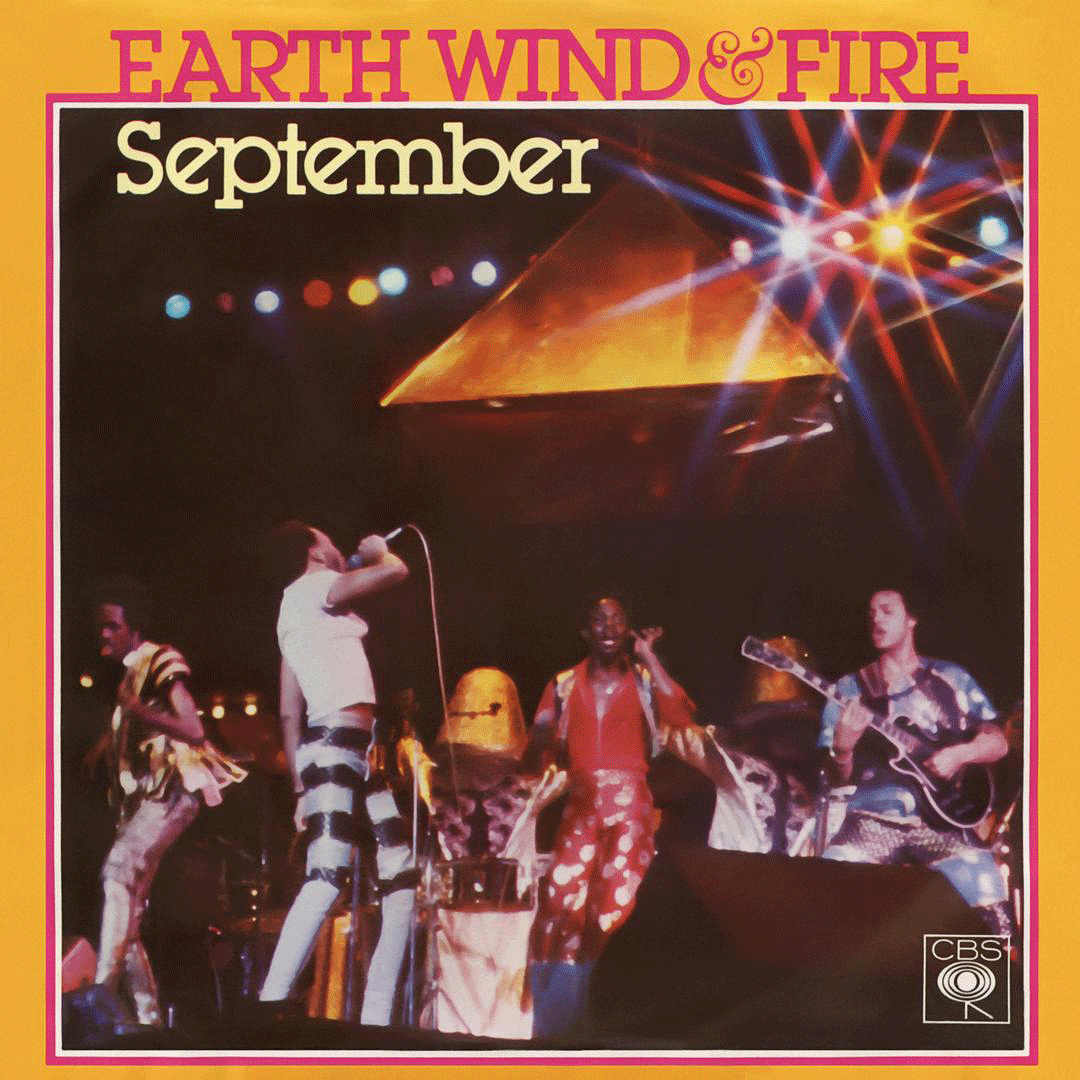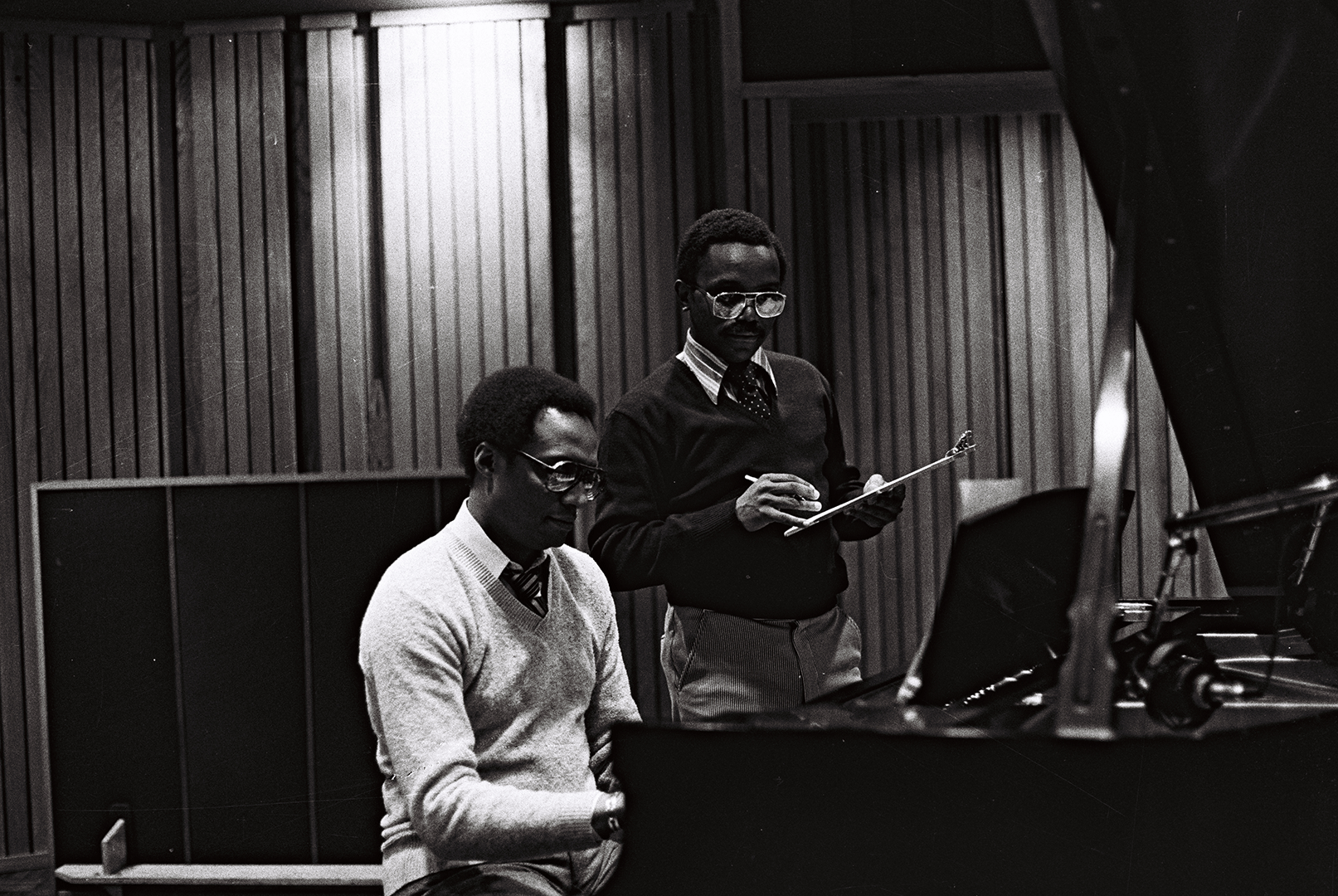
Issue No.3–1976-1983 ©FEBRUARY 2020 #312Soul // Pictured: Wilie Woods (silver suit), Larry Blackmon (sunglasses), Tom Washington (seated), and members of Cameo
As the ’70s surged forward, so did the evolution of soul. Gone were the days of smooth grooves; welcome to daring instrumentation, hypnotic beats, and multilayered production. From intoxicating funk riffs to dance-inducing disco rhythms, the music of this decade laid the groundwork for the popular music of today—and it was helmed by Chicago’s Black music community.
Funk music quickly became a part of Chicago’s legacy.
With its build on the foundation of soul, funk featured groovy hooks, a strong bassline, and elements of jazz. One trailblazer Daryl Cameron, known as Captain Sky, took a twist on classic comic book themes, releasing The Adventures of Captain Sky in 1978.
The hit tracks were “Wonder Worm” and “Super Sporm”—and the latter became a foundational track for hip-hop music as well as DJs around the world. In 1982, famed New York City DJ Afrika Bambaataa sampled “Super Sporm” in the song “Planet Rock” along with the Soul Sonic Force.
Daryl Cameron (centered back row) and his first band, The Bionic Garage
Daryl Cameron as a young Captain Sky
Captain Sky and his band taping for Philadelphia’s City Lights television show in 1980
Larry Davis (left) and Jerry Griffin (right) surrounded by fans in Philly in 1979
Daryl Cameron reveals how Captain Sky came to be.

Formerly at 1 N. Wacker Drive and founded by Curtis Mayfield and Eddie Thomas in 1968, Chicago’s Curtom Records became an incubator for acclaimed funk grooves and, as the genre became flashier in form, disco ballads. 1978 brought Linda Clifford’s “Runaway Love” and Leroy Hutson’s “Get to This (You’ll Get to Me),” while Mayfield’s “Tripping Out” was released in 1980 as funk transitioned into disco.
Curtis Mayfield and Eddie Thomas
Eddie Thomas, founding Soul Train dance choreographer Clinton Ghent, and Alvin Thomas
Lit-up dance floors. Sequin getups. Dance moves like The Hustle—the age of disco had begun.
Characterized by over-the-top orchestral arrangements, mesmerizing rhythms, the classic 4/4 time signature, and emphatic vocals, disco took its name from the clubs that housed music-lovers hungry for the beat. And female artists stormed to the forefront of this movement.
In the late ‘60s, Chicago group The American Breed featured standout vocalist Paulette McWilliams as their lead vocalist. With powerful, gospel-laden vocals, McWilliams decided to go in a new direction as the band turned to soul and funk. Newly renamed as Rufus, the band featured a future star as its lead, McWilliams’ friend, Chaka Khan.
Her vocals shined on songs like “Sweet Thing” and “Tell Me Something Good,” and she broke out on her own as the decade neared its close. Khan released her self-titled debut in 1978, featuring the powerhouse ballad that remains an anthem for female empowerment everywhere, “I’m Every Woman.” Then came “Do You Love What You Feel” and “Got To Be There” as she continued her reign.
Watch a duet between Chicago soul-jazz fusion singer Paulette McWilliams and Marvin Gaye featuring the song “If I Could Build My Whole World Around You” starting at 4:33.

The spotlight also shined on powerhouse girl-group The Emotions. Grounded in gospel and R&B, the group was originally known as the Hutchinson Sunbeams as they released soul hits during the ’60s. But the trio quickly adapted to disco territory. In 1977, they released “Best of My Love,” a collaboration with Maurice White of Earth, Wind & Fire. They then collaborated with Earth, Wind & Fire in a whole new way with joint song venture, smash-hit “Boogie Wonderland” in 1979.
The song has 151 million plays on Spotify—and counting.
As the decade of disco brought in countless unique Chicago voices, Tom Washington and Charles Stepney continued to innovate together with multifaceted, inspired song arrangements. Both worked on Earth, Wind & Fire’s massively successful album Spirit, released in 1976.
Stepney lent his creative contributions to the album by way of arranging songs like “Getaway” and “Saturday Night,” while the title track “Spirit” was arranged by Washington for Stepney in hopes to brighten his spirits and showcase the band’s gratitude toward his work. Unfortunately, Stepney passed away that very same year, before he could hear the uplifting ballad himself.
As the ’70s moved into the early ’80s, Washington continued to be credited on megahit after megahit and arranged classics like Earth, Wind & Fire’s “September” (1978); Loleatta Holloway’s “I’ve Been Loving You Too Long” (1980); and Ramsey Lewis’ “Lakeshore Cowboy (1981), maintaining his status as a steadfast and trusted musical partner to countless Chicago artists.
A few of Tom Washington’s classic arrangements
Ramsey Lewis and Tom Washington
Della Reese and Tom Washington
Theodis Rogers and Tom Washington at P.S. Studios
The disco dance craze continued into the late ’80s, and it ushered in DJ culture seamlessly. To create more inclusion for the Black artist community, Eddie Thomas made a new wave in the scene by founding the the Dogs of War. A disco record distributor as well as a training organization, the Dogs of War ensured that Black DJs felt supported, giving them access to the freshest new tracks to break in at clubs, parties, and in the underground scene.
The scene was booming, and Chicago music became even bolder.
Eddie Thomas discusses the impact of his record pool, the Dogs of War.
Ayana Contreras shares her take on the breakbeats from Chicago.
Chicago was in need of bigger spaces to match. Enter Robert Williams in 1975. A promoter from New York City, he tapped who we now know as one of the most influential purveyors of house music, Frankie Knuckles, to open a club with him in 1977, one that would come to rival New York City’s beloved Studio 54.
Originally named U.S. Studios, the club was a welcoming haven for Black artists, and as its fanfare grew, it became known as the Warehouse. Meanwhile, the CopHerBox II, founded by Willie Woods at 11731 S. Halsted Street, gave guests a space to dance to their favorite disco grooves all night long.
Robert Williams at 206 S Jefferson
Robert Williams discusses the beginning of the Warehouse.

Crowd at CopHerBoxII 117th and Halsted - circa 1981
Throughout the advent of funk and disco, a new generation was starting a movement of their own. DJ culture was born, and parties sprouted up everywhere—in school gyms, taverns, small clubs, and houses.
From these scenes, another electric, eclectic musical revolution would be born in Chicago’s own soulful “house.”
Soulstress Spotlight
Ruby Andrews
Disco. Blues. Funk. Ruby Andrews has done it all, but stays grounded in soul. From the moment she moved from Hollandale, Mississippi (population nearly 2,000), to bustling and booming Chicago, Andrews made a name for herself (quite literally and figuratively—she was born Ruby Stackhouse) to become one of the city’s most influential female voices.
She got her start with The Vondells in Hyde Park, then broke out on her own to sign with Zodiac in 1967. “Casanova (Your Playing Days Are Over)” became her first big hit that very same year. Despite the fact that it was recorded in Detroit, epicenter of Motown’s polished sound, its essence is rooted in that iconic Chicago soul sound—gospel-infused, raw, and wholly unique.














